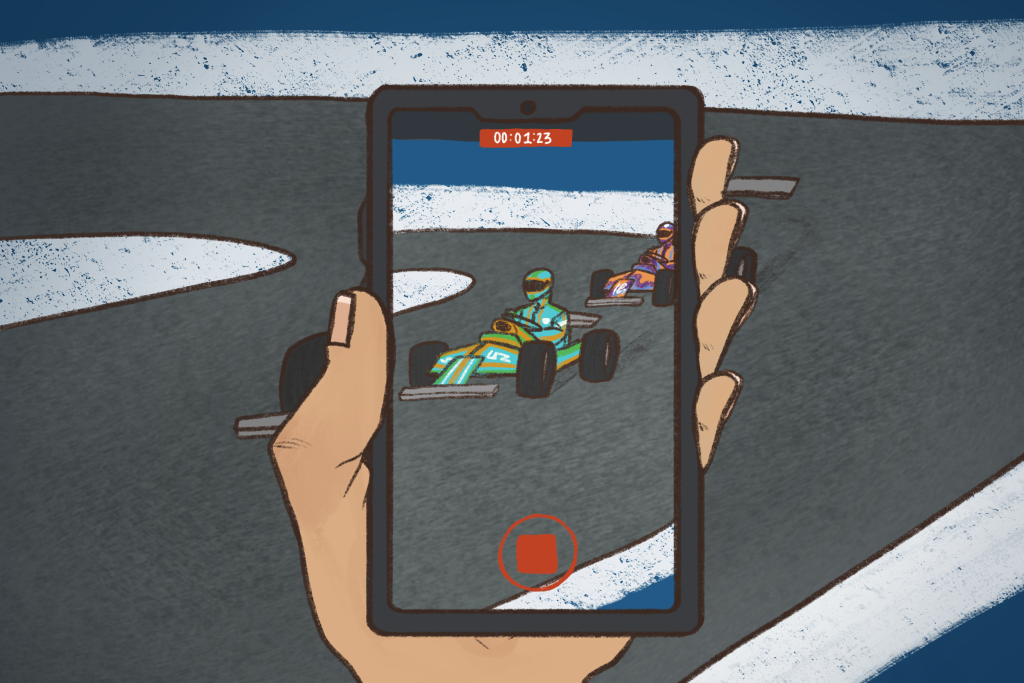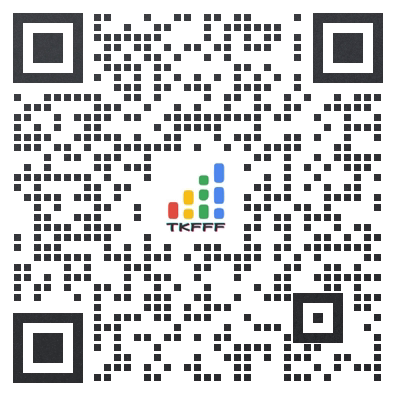
Design by Avery Nelson.
In round four of the 2024 season, Logan Sargeant of Williams Racing crashed during his first practice for the Japanese Grand Prix. What caught my attention wasn’t just the incident itself, but more so how Formula 1’s official TikTok page responded. They posted a clip of Sargeant’s crash including the fan-created nickname “logie bear” in the caption — I would have never expected a sport’s official platform to refer to one of their athletes by a fan name. Not only that, but a social media team shouldn’t be so casual about a crash. While it was not life-threatening, there was still extensive damage to the car. This unusual approach raises some questions about Formula 1 teams’ social media presence: Are they getting too informal, blurring the line between fandom and professionalism?
An @f1Diary TikTok post illustrates this issue well. She makes the point that Formula 1 teams have targeted their Generation Z fan base without considering how it ultimately comes across as odd.
Formula 1 teams have lost a crucial boundary with their fans by slipping into an overly casual tone on social media, detracting from the sport’s brand of tension, obsession and euphoria. This “fourth wall” must be rebuilt to maintain respect for athletes and preserve the integrity of the sport.
Formula 1’s social media teams run the risk of alienating their traditional fanbase — the purists who value the sport’s history — in their attempt to draw in new and younger followers. With Netflix’s Formula 1 docuseries “Drive to Survive,” a new wave of fans have been introduced to the motorsport. But some long-established audience members resent “DTS fans” and the exaggerated and fabricated drama the show presents. Additionally, long-standing fans are upset at the shift toward fangirl culture. Losing their trust could erode Formula 1’s core identity, undermining long-term sustainability.
The allure of Formula 1 lies not only in the spectacle of speed and precision but also in the charismatic drivers who embody the spirit of the sport. With social media, a more casual tone humanizes athletes to their fandom and can increase fan engagement. But, the rise of social media has also amplified the culture of athlete idolization, presenting challenges for Formula 1’s engagement strategies.
One notable consequence of athlete idolization is the distortion of the sport’s essence. When social media accounts predominantly cater to certain demographics, there’s a risk of reducing these drivers to heartthrob symbols of celebrity. This can overshadow their remarkable skill and dedication, turning them into objects of admiration rather than respectable athletes. This also risks diluting the sport’s identity in pursuit of short-term engagement metrics.
Formula 1’s social media presence is aimed at introducing fans to the fast-paced world of racing and is considered the largest driver of fan growth. However, in their pursuit of relatability and engagement, teams risk undermining their professional image and credibility. Drivers like Sargeant deserve to be treated with the same respect and formality as any employee of the team, not as a character in a fan-driven narrative.
While fan interaction is important, it has to be balanced with maintaining the excellence and seriousness that defines Formula 1. There’s a reason why some celebrities purposefully maintain a distance from their fandom — it’s not that they’re out of touch; rather, they’re trying to retain a level of dignity and integrity. Treating these drivers as celebrities adds more pressure on them to maintain a certain profile, potentially belittling their dedication and effort to their sport and team.
Undeniably, Formula 1 is a business, much like any other sport. The motorsport thrives on sponsorships, revenue and growing its audience. After Liberty Media, an American mass media company, acquired Formula 1 in 2017, they gave teams more freedom on social media—which they have used to increase engagement.
Take TikTok’s sponsorship of the Aston Martin Aramco Formula 1 team as a prime example of fan outreach. This partnership isn’t just about showcasing fancy cars; it’s a strategic move to tap into a younger and digitally attuned audience. Aston Martin’s social media provides a blueprint, balancing humor and professionalism without venturing into gimmicky territory.
Formula 1 social media account administrators shouldn’t chase every trend — instead, they need a nuanced strategy that resonates with both old and new fans. By understanding what works for their brand and their supporters, teams can craft content that feels authentic and inclusive for everyone. Even as engagement numbers rise, the content must remain thoughtful and respectful of the sport’s heritage. This needs to be taken seriously to avoid drivers gaining the same relationship with social media as Max Verstappen has with Netflix’s “Drive to Survive” — Verstappen has refused to participate in the show.
A study by BuzzRadar, a London-based social intelligence group, highlights a decline in Formula 1’s popularity since 2022, which social media admins have counteracted by attempting to engage new audiences.
Ultimately, the transformation of Formula 1 social media is inevitable, driven by the need to please modern audiences and digital trends. However, this evolution must be guided by a thoughtful strategy that preserves the sport’s professionalism and values. Expanding the fanbase is commendable but it shouldn’t come at the cost of authenticity. Formula 1 should strive for inclusivity without compromising its identity.
However, Formula 1’s social media goal shouldn’t be to merely attract eyeballs but to foster a genuine appreciation for the sport’s technical mastery and competitive spirit. Social media admins need to strike a delicate balance — embracing creativity and engagement while upholding the reverence and respect that define Formula 1.
文章来源:michigandaily


TKFFF公众号
扫码关注领【TK运营地图】

TKFFF合作,请扫码联系!







 闽公网安备35021102002035号
闽公网安备35021102002035号